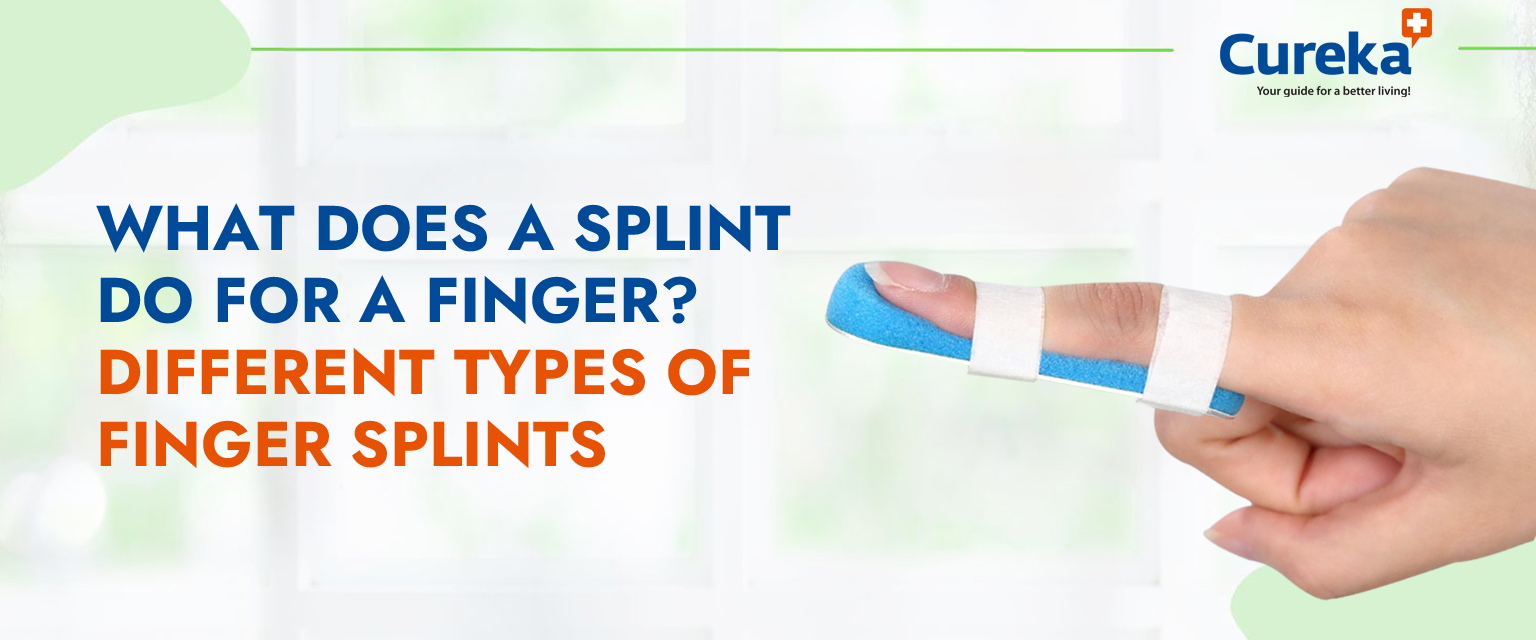What Does a Splint do for a Finger? Different Types of Finger Splints
Finger Splints: Helping You Heal and Prevent Injury
When you think of medical splints, what usually comes to mind is the arm, leg or torso splint used to immobilize a broken bone. However, splints are also used to treat and prevent finger injuries. Finger splints can be used to treat a range of conditions, including broken bones, sprained ligaments, tendon injuries, arthritis and overuse injuries.
Finger splints are a great way to protect, support, and rest injured fingers. Whether you’ve recently suffered a fracture, sprain, or dislocation, a finger splint is an effective way to reduce swelling and promote healing.
Finger injuries are very common, especially among those who are active in sports and other physical activities. Whether caused by a direct impact with an object or a moment of misstep, a finger injury can be painful and impede your ability to move your hand in a full range of motion. When you experience a finger injury, it is important to seek medical attention to determine the extent of the damage and whether a splint is needed to help protect the affected area.
What is a Finger Splint?
A finger splint is a device used to immobilize and stabilize a finger or thumb after an injury. These devices are typically made from a lightweight material such as plastic/ aluminum or foam and are available in a variety of shapes and sizes. The purpose of the device is to hold the finger in place to prevent further movement and allow the injury to heal. Finger splints can also be used to help reduce pain and swelling and provide support to weakened joints.
Types of Finger Splints
There are several types of finger splints available, each designed to meet the specific needs of the patient. Below is a brief overview of the different types of splints.
Finger Extension Splints: These splints are designed to keep the affected finger in a straight position and restrict its range of motion. This type of splint is often used to immobilize a finger after a fracture or dislocation or in Mallet finger
Finger Flexion Splints: Flexion splints are the opposite of extension splints and are used to stabilize the joint in a bent position. This type of splint is frequently used to treat tendon or joint injuries.
Finger Traction Splints: Traction splints are used to gently pull the joint in the opposite direction of the injury. This type of splint can be used to reduce swelling and pain, as well as to stretch a tight joint.
Finger Braces: Finger braces are used to provide support to weakened joints. These devices typically feature adjustable straps to allow for customized support.
Mallet Finger Splint: The mallet finger splint is designed to treat injuries to the distal interphalangeal joint (DIP joint). This joint is located at the end of each finger and is responsible for movement of the fingertip. A mallet finger splint is designed to hold the DIP joint in fully extended position. This helps to reduce pain and promote healing.
Boutonniere Splint: The boutonniere splint is designed to treat injuries to the proximal interphalangeal joint (PIP joint). This joint is located near the middle of the finger and is responsible for the bending and straightening movement of the finger. A boutonniere splint is designed to hold the PIP joint in a extended position. This helps to reduce pain and promote healing.
Trigger Finger Splint: The trigger finger splint is designed to treat injuries to the tendon that runs along the length of the finger. This tendon is responsible for bending and straightening the finger. A trigger finger splint is designed to hold the tendon in a slightly flexed position. This helps to reduce pain and promote healing.
Radial Styloid Splint: The radial styloid splint is designed to treat injuries to the wrist and thumb. This splint is designed to hold the thumb in a slightly abducted position. This helps to reduce pain and promote healing.
The most common types of finger splints are:
- Static Splints:
These splints are designed for immobilizing and protecting a finger, but do not allow for movement. Static splints are often used immediately after an injury to help reduce swelling and protect the finger from further damage.
- Dynamic Splints:
These splints allow for some movement of the injured finger, but still provide support and protection. Dynamic splints are typically used for more serious injuries, as they can help promote healing while still allowing for some movement.
- Elastic Splints:
These splints are designed to provide support and allow for a full range of motion in the injured finger. They are often used in rehabilitation after a serious injury, or to provide support for chronic conditions.
For static splints, it’s important to make sure that the injured finger is properly supported and not bent at any strange angles. For dynamic splints, it’s important to make sure that the finger is not moved too far in any direction. Finally, for elastic splints, it’s important to make sure that the splint is not too tight or too loose.
How to Choose the Right Splint
When choosing a finger splint, it’s important to consider the type of injury and the amount of support needed. It’s also important to make sure that the splint fits properly. A splint that is too tight can cause additional discomfort and can impede circulation, while a splint that is too loose can be ineffective.
When to Wear a Finger Splint
Finger splints should be worn as soon as possible after the injury. The amount of time you will need to wear the splint will depend on the type of injury and your doctor’s instructions. In general, splints should be worn for at least a few weeks or until the injury has healed.
Caring for Your Splint
It is important to take proper care of Splints. To ensure the splint remains in good condition, you should clean it regularly with a damp cloth and mild soap. Additionally, you should inspect the splint for any signs of wear or damage, as this can increase the risk of further injury. In case of any discomfort seek medical advice or consult with Orthopaedician immediately.
Conclusion
Finger splints are a useful tool for protecting and stabilizing injured fingers and thumbs. When selecting a splint, it is important to consider the type and severity of your injury, as well as the fit and comfort of the device. Additionally, proper care and maintenance of the splint is essential to ensure it remains in good condition and continues to protect your injury. With the right finger splint, you can help your finger heal and prevent future injuries.














